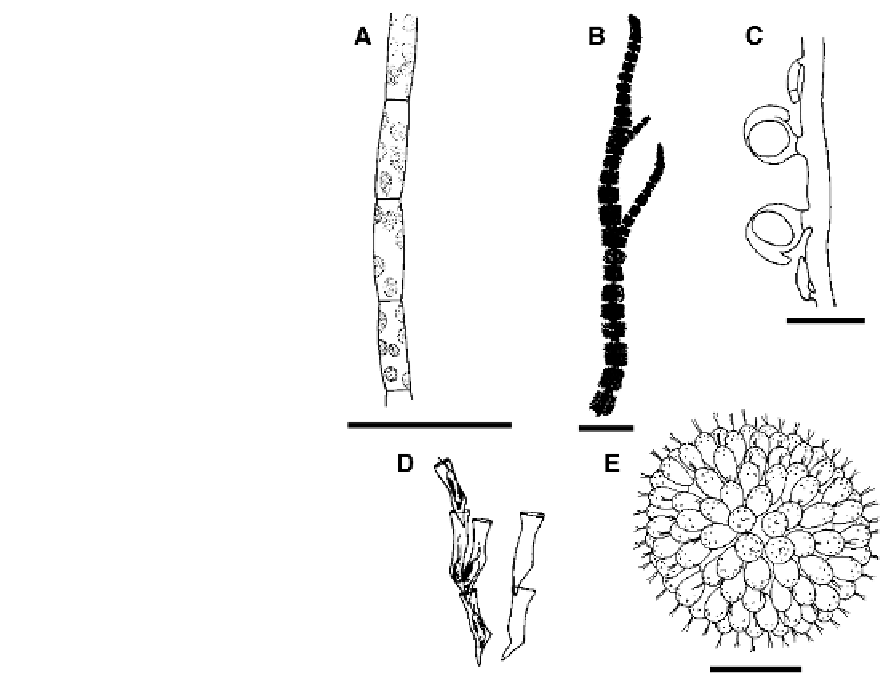Environmental Engineering Reference
In-Depth Information
FIGURE 8.5
Selected algal genera, with scale bar length: (A)
Tribonema
(a Xanthophyte),
40
m; (B)
Batrachospermum
(a red alga), 1 cm; (C)
Vaucheria
(a Xanthophyte), 200
m;
(D)
Dinobryon
(a Chrysophyte), 20
m (from
Prescott 1978, 1982, reproduced with permission of The McGraw-Hill Companies).
m; and (E)
Synura
(a Chrysophyte), 50
types are most common in lake plankton. Species with filamentous mor-
phologies are generally attached to the benthos in streams and lakes. Fila-
mentous green algae are usually the most bothersome algae in nutrient-
enriched streams, with massive populations observed in some cases.
The Charophytes (stoneworts) are related closely to the Chlorophyceae
but are more complex (Fig. 8.8). The stoneworts are likely the evolution-
ary precursors to land plants. They are not vascular but have multicellular
reproductive structures more like land plants than the other algae. The
charophytes can sometimes cause problems because of immense biomass
that impedes water flow or navigation on rivers.
Chara
can be abundant
in the benthos of some oligotrophic lakes but may also be an important
component of more productive wetlands. Many species of charophyte are
sensitive to nutrient enrichment and distribution of the stoneworts has
been used to indicate nutrient pollution.
Additional Algal Groups
Additional groups are found in freshwaters and include the Crypto-
phyceae, the Tribophyceae, and the Phaeophyceae. Members of these

Search WWH ::

Custom Search